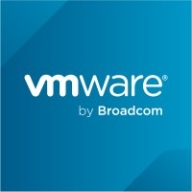

VMware Aria Operations for Applications and Azure Monitor are leading monitoring tools. Azure Monitor often stands out for its feature richness, while VMware Aria Operations for Applications excels in pricing and support.
Features: VMware Aria Operations for Applications comprehensive analytics, detailed metric collection, flexible pricing models. Azure Monitor native integration with Azure services, extensive logging capabilities, and expansive feature set.
Room for Improvement: VMware Aria Operations for Applications needs enhancements in scalability and alerting mechanisms. Azure Monitor improvements needed in log query complexity, dashboard customization, and user-friendly log queries.
Ease of Deployment and Customer Service: VMware Aria Operations for Applications more straightforward deployment, responsive customer support. Azure Monitor highly integrated with Azure, complex for non-Azure environments, comprehensive but less responsive support.
Pricing and ROI: VMware Aria Operations for Applications flexible and competitive pricing, good ROI. Azure Monitor higher cost, extensive features, slower ROI.
| Product | Market Share (%) |
|---|---|
| Azure Monitor | 4.7% |
| VMware Aria Operations for Applications | 2.0% |
| Other | 93.3% |


| Company Size | Count |
|---|---|
| Small Business | 23 |
| Midsize Enterprise | 6 |
| Large Enterprise | 29 |
| Company Size | Count |
|---|---|
| Small Business | 4 |
| Midsize Enterprise | 1 |
| Large Enterprise | 10 |
Azure Monitor is a comprehensive monitoring solution offered by Microsoft Azure. It provides a centralized platform for monitoring the performance and health of various Azure resources, applications, and infrastructure.
With Azure Monitor, users can gain insights into the availability, performance, and usage of their applications and infrastructure. The key features of Azure Monitor include metrics, logs, alerts, and dashboards. Metrics allow users to collect and analyze performance data from various Azure resources, such as virtual machines, databases, and storage accounts.
Logs enable users to collect and analyze log data from different sources, including Azure resources, applications, and operating systems. Azure Monitor also provides a robust alerting mechanism that allows users to set up alerts based on specific conditions or thresholds. These alerts can be configured to notify users via email, SMS, or other notification channels. Additionally, Azure Monitor offers customizable dashboards that allow users to visualize and analyze their monitoring data in a personalized and intuitive manner.
Azure Monitor integrates seamlessly with other Azure services, such as Azure Automation and Azure Logic Apps, enabling users to automate actions based on monitoring data. It also supports integration with third-party monitoring tools and services, providing flexibility and extensibility.
Overall, Azure Monitor is a powerful and versatile monitoring solution that helps users gain deep insights into the performance and health of their Azure resources and applications. It offers a wide range of features and integrations, making it a comprehensive solution for monitoring and managing Azure environments.
VMware Tanzu Observability by Wavefront is a powerful tool for monitoring and analyzing the performance and availability of applications and infrastructure in real-time.
With its comprehensive monitoring capabilities, visualizing and analyzing data becomes effortless. The real-time alerting system ensures timely issue resolution, while scalability and a user-friendly interface provide a seamless experience for smooth operations.
We monitor all Cloud Monitoring Software reviews to prevent fraudulent reviews and keep review quality high. We do not post reviews by company employees or direct competitors. We validate each review for authenticity via cross-reference with LinkedIn, and personal follow-up with the reviewer when necessary.